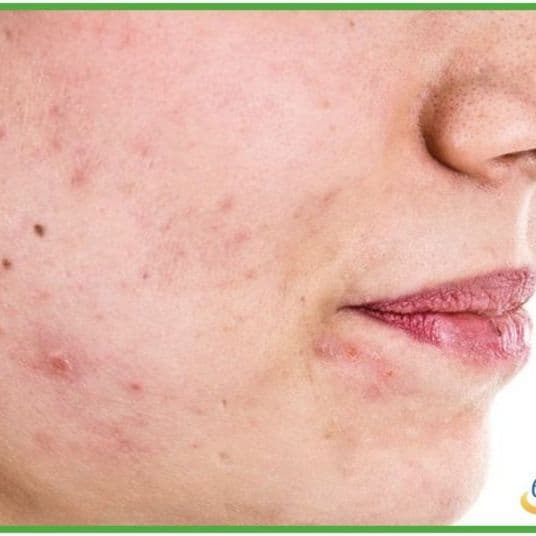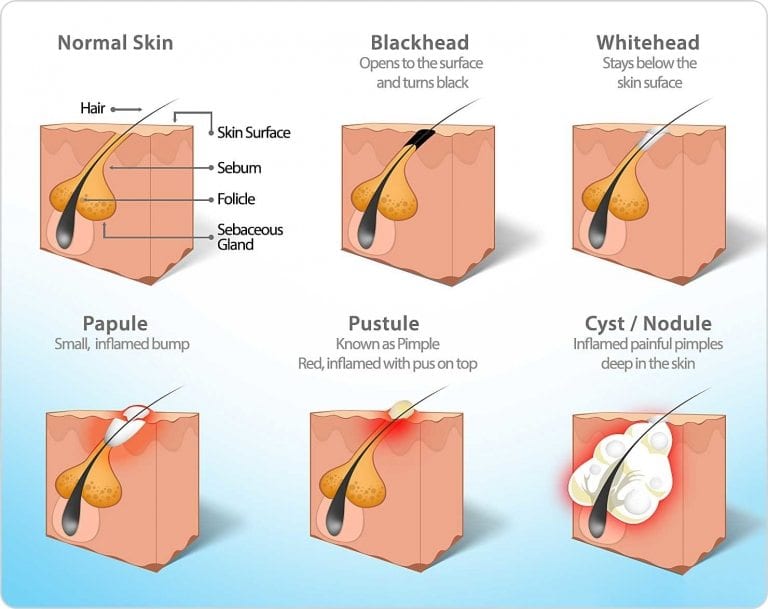The Best Guide to Acne Medications That Will Help You Choose Wisely
Acne Medication Consumer Guide
Reviewed by:
Dr. Diana Rangaves, PharmDLast Reviewed On:
May 31, 24
Zits. Pimples. Acne. No matter what you call it, 80 percent of people between 11 and 30 years of age, have experienced acne in one form or another. Whether it’s a huge pimple on prom night, a breakout at the onset of a menstrual cycle, or a cystic bump that had to be removed by a doctor, acne can be a real pain.
Breakouts and acne scars can be traumatizing for the high schooler who worries about being bullied for having bad skin. Or the actor who is self-conscious about their scars.
But thanks to science, people with acne don’t have to suffer for too long. There’s a world of acne medication out there, many at discounted prices, to help with all aspects of acne. On the moderate side, over-the-counter washes can help treat on-the-spot pimples whereas retinoids can help speed up the healing process for scars.
ACNE MEDICATION PRICE COMPARISON
For your convenience, we have linked all prescription drug prices (shown below) within our database so you can quickly compare and find the lowest prices on most acne medications.
Learn more about the top acne treatments with our ultimate guide below!
WHAT IS ACNE?
Although some people believe you can get acne from eating mountains of candy or piles of greasy food, it’s actually an inflammatory skin disease. Common acne, also known as acne vulgaris, shows up in a variety of places all over the body.
Most frequently appearing on the face, acne can also pop up on the chest, neck, back, arms, shoulders, and ears. Pimples, whiteheads, blackheads, and cysts are all forms of acne.
Although it’s often associated with hormonal teenagers, acne is non-discriminating and can strike at any age. No matter how old you are, the amount of oil your sebaceous glands produce can be triggered by changing hormones. Exhibit A: Adult acne.
HORMONAL INFLUENCES
During puberty, testosterone production rises steeply, causing an increase in oil production. Pores become clogged when these oils clog the tiny hairs on the skin’s surface. When these oils clog the tiny hairs on the skin’s surface, pores become clogged. In turn, it slows down the skin’s turnover process and pimples develop.
Women's hormonal changes, such as menstruation, pregnancy, or menopause, can also cause breakouts and acne problems. Birth control pills are often prescribed as an effective acne medication to control pimples and other skin problems.
TYPES OF ACNE

There are several types of acne that come in all shapes and sizes, from the occasional mild pimple to the more severe forms of cystic acne. No matter what type of acne you have, it all begins with clogged pores.
Environmental factors like dirt and smoke are major triggers for dead skin cells and body oils. Bacteria is also another major culprit that can seep into your skin unnoticed and wreak acne havoc. That’s why it’s important to regularly wash your face every morning and evening with an anti-bacterial solution.
Acne lesions are comedones, basically the tiny hairs on your body that get filled with bacteria and dead skin cells. The follicles become clogged and BOOM – a pimple shows up.
COMEDONAL
Comedonal acne is a moderate form of acne caused by oil, dirt, and skin cells buildup. Pimples appear most frequently in the T-zone: nose, forehead, and chin. Whiteheads and blackheads are typical of this type of acne condition.
CYSTIC
Cystic acne is a genetic acne condition caused by the hormone androgen and is more common in males than females. When bacteria go deep into your pores, an infection can happen. The more blocked pores become, the more painful they can be.
Often swollen with pus and inflamed, cystic acne can be a source of embarrassment. If not treated properly, intense permanent scarring can occur.
NON-INFLAMMATORY
Non-inflammatory acne can be milder and treated with both over-the-counter and prescription medications. The most common type of acne is due to clogged pores that produce two types of pimples: blackheads and whiteheads. Open comedones (“clogged pores”) are blackheads and closed comedones are whiteheads.
Blackheads form when skin becomes clogged with dirt and oils. Whiteheads form when clogged pores become infected and inflamed.
INFLAMMATORY
Inflammatory acne is the result of papules and pustules. Papules form when bacteria infect clogged pores and they become red and inflamed. Pustules form when clogged pores become filled with pus and swell on the surface of the skin.
Although picking at papules and pustules is tempting, try to avoid it because it can cause major scarring. This is a more serious form of acne and should be treated by a professional.
15 BEST MEDICINE FOR ACNE TO TRY
1. CLINDAGEL
Clindamycin is the main active ingredient in this prescription-only topical acne treatment. It’s especially effective for stubborn acne lesions that don’t respond to typical treatment. By attacking the bacteria embedded in the skin’s lesions, Clindagel has been proven to clear up infections.
2. DOXYCYCLINE HYCLATE
Doxycycline-Hyclate is an antibiotic from the tetracycline family of prescription drugs and is taken in pill form. Although doxycycline is used to treat a variety of bacterial conditions, it’s especially beneficial for treating severe acne. Exposure to the sun should be limited due to a higher rate of sunburn damage.
3. BENZAMYCIN
Benzamycin is a topical medication that works in two ways: it prevents bacteria from forming that causes acne and regenerates skin by peeling away the top layer. Using the powerful combination of Erythromycin and Benzoyl peroxide, Benzamycin is a helpful treatment for mild acne.
4. NEUTROGENA ACNE WASH OIL-FREE
This over-the-counter acne treatment and facial cleanser use salicylic acid to unclog the pores gently. Highly recommended by dermatologists, Neutrogena T Gel Shampoo keeps potential breakouts from cropping up.
5. AZELEX
Azelex is a topical cream that works to reduce the number of acne flare-ups over a long-term period. Azelex is an ideal gentle treatment for sensitive skin with both anti-bacterial and anti-inflammatory properties.
6. NEO-MEDROL ACNE LOTION
Four powerful acne-blasting ingredients make up this topical treatment. With its anti-bacterial and anti-inflammatory qualities, Neo Medrol also helps speed up the dead skin cell turnover process for a clearer complexion with its anti-bacterial and anti-inflammatory qualities.
7. RETIN-A
Retin-A is a topical retinoid used to clear up mild to moderate acne. It works by speeding up the cell turnover process and preventing pore blockage that causes breakouts. This tried and true prescription acne medication has been around since the ’60s and comes in various strengths to tackle all of your acne issues. Tretinoin, the acidic form of vitamin A, must be used with sunscreen and applied at night.
8. ACZONE
In just 12 weeks, prescription acne medication Aczone has been clinically proven to reduce breakouts with positive results. The topical gel formula is applied once a day and uses Dapsone to fight inflammatory and non-inflammatory acne.
9. DUAC GEL
Prescription acne medication Duac Gel works by using the antibiotic, clindamycin, and benzoyl peroxide, a keratolytic. Keratolytics work to break down the top layer of the skin and rid it of blackheads and whiteheads. After six weeks of use of the once-daily application, users should see a big improvement.
10. ACNECIDE
Benzoyl peroxide is the main ingredient in this over-the-counter acne medication. The gel is ideal for people with moderate inflammatory acne who need easy at-home treatment. It’s also especially effective at wiping out bacteria caused by overactive sebaceous glands. After six weeks, users’ skin was noticeably improved by Acnecide Gel .
11. AMNESTEEM
Amnesteem is meant for patients with severe nodular acne who have not had much success with other treatments and medications. Although this oral prescription greatly helps reduce acne, it also comes with a high risk of birth defects, miscarriage, or fetal death. Women are required to take a pregnancy test before a prescription is given and take two types of birth control.
12. YAZ
Yaz is an oral contraceptive with estrogen, progestin, and synthetic progesterone to help treat hormonal acne in women. Because a lot of flare-ups occur near a woman’s menstrual cycle, doctors prescribe this type of treatment that takes several months to see results.
13. DIFFERIN GEL
This topical retinoid comes in both a cream and a gel version to treat blocked pores. Doctors recommend starting this acne medication gradually (every other day) to avoid any skin irritations. Because retinoids can create greater skin sensitivity to the sun, evening application of Differin-Gel is best.
14. SPECTRO ACNE LOTION
Spectro Acne Lotion is an over-the-counter lotion treatment that uses benzoyl peroxide to help blast acne. It comes in two strengths: 2.5% and 5%, depending on your sensitivity to benzoyl peroxide and there is also a sensitive skin option. It is especially beneficial in the treatment of back acne.
15. ERYACNE 2%
Eryacne works to prevent acne with a focus on bacterial treatment and prevention. The fast-absorbing gel formula contains erythromycin, an antibiotic, and is applied twice daily for eight weeks for mild acne.
TAKE BACK YOUR HEALTHY SKIN
If you’re dealing with acne, whether it’s mild or severe, we know how important it is to find the right acne medication. Make sure to consult with a medical professional before choosing the best treatment for your skin’s needs.
Join Our Free Newsletter
Get a weekly dose of money-saving tips on your medications, drug side effects alerts, drug interaction warnings, free prescription coupons, late-breaking safety information and much, much more!